| Numéro d’article | Description | Unités par boîte |
|---|---|---|
| 186-0224-AMS | Système de monitorage BIS™ LoC à 4 canaux avec câble d’interface patient | 1 |
| 186-1046 | Moniteur BIS™ Vista | 1 |
| 536-0047 | Cordon d’alimentation de 6 pi (Amérique du Nord) | 1 |
Monitorage des canaux cérébraux
Système de monitorage BIS™
<p>Le système de monitorage Bispectral Index™ (BIS™) traite les informations de l’EEG pour fournir une mesure directe du niveau de conscience du patient.</p>
Fonctions
Moniteurs BIS™ complets à 2 et 4 canaux
Le moniteur BIS™ traduit les données EEG brutes en indice BIS™ facile à lire.
Les moniteurs à 2 canaux et à 4 canaux fournissent :
- Un affichage configurable par l’utilisateur
- Une plateforme polyvalente avec capacité d’extension
Le moniteur à 4 canaux fournit :
- Le monitorage EEG
- L’indicateur d’asymétrie (ASYM)
- La capacité d’obtenir des tendances pour les valeurs BIS™ gauche et BIS™ droit
Découvrez les données à l’appui de l’algorithme BIS™ éprouvé.
Données cliniques probantes
Questions fréquemment posées
L’administration de bolus d’un anesthésique intraveineux, les modifications récentes de l’anesthésie par inhalation, l’administration d’agents adjuvants (bêtabloquants, agonistes alpha 2) peuvent tous entraîner une diminution aiguë des valeurs de monitorage BIS™.
Un changement brusque des valeurs BIS™ peut refléter un nouvel état cortical relatif au dosage de l’anesthésie et aux changements des conditions chirurgicales. Les artéfacts haute fréquence (EMG, électrocautérisation ou signaux haute fréquence) peuvent contaminer le signal EEG et biaiser l’indice BIS™ vers une valeur plus élevée. Par ailleurs, la valeur de l’indice BIS™ peut montrer une augmentation passagère en réponse à la stimulation nocive.
Avant l’application du capteur, assurez-vous d’essuyer la peau avec un tampon d’alcool et de bien sécher. Après avoir appliqué le capteur, appuyez sur les bords du capteur pour confirmer l’adhérence. Encerclez les quatre éléments/cercles pour sceller le gel. Appuyez sur chaque élément/cercle pendant cinq secondes pour assurer un contact approprié.
Le pourcentage de segments au cours des 63 dernières secondes au cours desquelles le signal EEG est considéré comme supprimé (0–100 %). Le nombre de bouffées correspond au nombre de bouffées d’EEG par minute, une « bouffée » étant définie comme une courte période d’activité de l’EEG précédée et suivie de périodes d’inactivité : suppression (0–20).
Le système BIS™ offre trois choix de taux de lissage sur lesquels la moyenne de la valeur BIS™ est calculée. Il existe trois réglages par défaut basés sur le mode du moniteur. Pour les modes moniteur 1 et 4, le réglage par défaut est de 15 secondes. Pour le mode moniteur 2, il est de 30 secondes et pour le mode moniteur 3, de 10 secondes.
Le moniteur BIS™ est prévu pour être utilisé sur des patients adultes et pédiatriques dans un hôpital ou un établissement de santé afin de surveiller l’activité cérébrale grâce à l’acquisition de signaux d’EEG. Il peut être utilisé pour le monitorage lors de l’administration des anesthésiques et peut être associé, chez l’adulte, à la réduction des épisodes de réveil avec mémorisation au cours d’une anesthésie générale et d’une sédation.
Cette plage de fréquences est le reflet de la puissance de l’activité musculaire, ou électromyographie (EMG), et de la puissance des autres artéfacts à haute fréquence. Lorsque la barre d’indicateur BIS™ est basse, cela indique que l’activité EMG est faible. Les conditions de monitorage BIS™ sont optimales lorsque la barre est vide. Une barre représente une puissance dans la plage de 30–38; deux barres représentent une puissance dans la plage de 39–47; trois barres représentent une puissance dans la plage de 48–55, et quatre barres représentent une puissance supérieure à 55.
Surveiller la présence d’artéfacts comme des signaux d’EMG, d’électrocautérisation ou des signaux à haute fréquence. Les artéfacts haute fréquence, y compris ceux énumérés, peuvent contaminer le signal de l’EEG et biaiser les valeurs du moniteur BIS™, qui seront plus élevées. S’assurer que les systèmes d’administration des anesthésiques fonctionnent correctement afin que le patient reçoive la dose prévue d’agent anesthésique. Des modifications du réglage du nébuliseur, des débits de gaz frais, du réglage de la pompe à perfusion intraveineuse et des voies d’administration intraveineuse peuvent expliquer un changement soudain du niveau de l’effet anesthésique et de la valeur de l’indice BIS™ qui en résulte. S’assurer que la dose d’anesthésique est suffisante. Un changement brusque de la valeur BIS™ peut refléter un nouvel état cortical relatif au dosage de l’anesthésie et aux changements des conditions chirurgicales. Évaluer le niveau actuel de la stimulation chirurgicale. La valeur du moniteur BIS™ peut montrer une augmentation passagère en réponse à une augmentation de la stimulation nocive.
Si vous poussez trop fort et que le Zip Prep se casse, le capteur peut ne pas fonctionner. Préparer la peau en essuyant avec un tampon d’alcool et laisser sécher soigneusement. Appliquer le capteur sur le front. En commençant par le premier cercle, centrer le capteur sur le front, à environ 5 cm (2 po) au-dessus du nez ou 4 cm (1,5 po) pour un capteur pédiatrique. Placer le quatrième cercle directement au-dessus et à côté du sourcil. Placer le troisième cercle sur l’une ou l’autre zone de la tempe entre le coin de l’œil et la racine des cheveux. Appuyer sur les bords du capteur pour assurer son adhérence. Encercler les quatre éléments/cercles pour sceller le gel. Appuyer sur chaque cercle pendant cinq secondes pour assurer un contact approprié. Appuyer sur chaque cercle un à la fois avec le bout des doigts. Appuyer fermement pour faire adhérer le capteur à la peau.
L’indicateur de qualité du signal (IQS) est une mesure de la qualité du signal de la source du canal EEG. Il est calculé en fonction des données d’impédance, des artéfacts et d’autres variables. Il s’affiche dans le coin supérieur gauche de l’écran, à droite de l’étiquette BIS™. La qualité du signal est optimale lorsque toutes les barres de l’icône IQS sont vertes. Si la qualité du signal est trop basse pour permettre un calcul précis de la valeur BIS™, cette dernière et les autres variables de tendance affectées par l’artéfact ne s’affichent plus à l’écran.
Informations de commande
Produits connexes
- Lewis SR, Pritchard MW, Fawcett LJ, Punjasawadwong Y. Bispectral index™ for improving intraoperative awareness and early postoperative recovery in adults. Cochrane Database Syst Rev. 2019;9:CD003843. doi:10.1002/14651858.CD003843.pub4.
- Zhang C, Xu L, Ma Y-Q, et al. Bispectral index™ monitoring prevent awareness during total intravenous anesthesia: a prospective, randomized, double-blinded, multi-center controlled trial. Chin Med J (Engl). 2011;124(22):3664–3669.
- Myles PS, Leslie K, McNeil J, Forbes A, Chan MT. Bispectral index™ monitoring to prevent awareness during anaesthesia: The B-Aware randomised controlled trial. Lancet. 2004;363(9423):1757-1763. doi:10.1016/S0140-6736(04)16300–9.
- Ekman A, Lindholm ML, Lennmarken C, Sandin R. Reduction in the incidence of awareness using BIS™ monitoring. Acta Anaesthesiol Scand. 2004;48(1):20-26. doi:10.1111/j.1399–6576.2004.00260.x.
- Punjasawadwong Y, Phongchiewboon A, Bunchungmongkol N. Bispectral index™ for improving anaesthetic delivery and postoperative recovery. Cochrane Database Syst Rev. 2014;(6):CD003843. doi:10.1002/14651858.CD003843.pub3.
- Luginbuhl M, Wuthrich S, Petersen-Felix S, Zbinden AM, Schnider TW. Different benefit of bispectal index™ (BIS™) in desflurane and propofol anesthesia. Acta Anaesthesiol Scand. 2003;47(2):165–73.
- Song D, Joshi GP, White PF. Titration of volatile anesthetics using bispectral index™ facilitates recovery after ambulatory anesthesia. Anesthesiology. 1997;87(4):842–848.
- Gan TJ, Glass PS, Windsor A, et al. Bispectral index™ monitoring allows faster emergence and improved recovery … . Anesthesiology. 1997;87(4):808–815. doi:10.1097/00000542-199710000-00014.
- Wong J, Song D, Blanshard H, Grady D, Chung F. Titration of isoflurane using BIS™ index improves early recovery of elderly patients undergoing orthopedic surgeries. Can J Anaesth. 2002;49(1):13–18. doi:10.1007/BF03020413.
- Punjasawadwong Y, Chau-In W, Laopaiboon M, Punjasawadwong S, Pin-On P. Processed electroencephalogram and evoked potential techniques for amelioration of postoperative delirium and cognitive dysfunction following non-cardiac and non-neurosurgical procedures in adults. Cochrane Database Syst Rev. 2018;5:CD01128.
- Chew WZ, Teoh WY, Sivanesan N, San Loh P, Shariffuddin II, Ti LK, Ng KT. Bispectral index™ (BIS™) monitoring and postoperative delirium in elderly patients undergoing surgery: A systematic review and meta-analysis with trial sequential analysis. J. Cardiothorac. Vasc. Anesth. 2022 1;36(12):4449–4459.
- Li X, Wang Y, Liu J, Xiong Y, Chen S, Han J, Xie W, Wu Q. Effects of perioperative interventions for preventing postoperative delirium: A protocol for systematic review and meta-analysis of randomized controlled trials. Medicine. 2021 7;100(29).
- Gao WW, He YH, Liu L, Yuan Q, Wang YF, Zhao B. BIS™ monitoring on intraoperative awareness: a meta-analysis. Current Medical Science. 2018;38(2):349–353.
Ce produit est homologué par Santé Canada sous le nom de "BIS COMPLETE MONITORING SYSTEM" sous le numéro d’homologation "5677".







